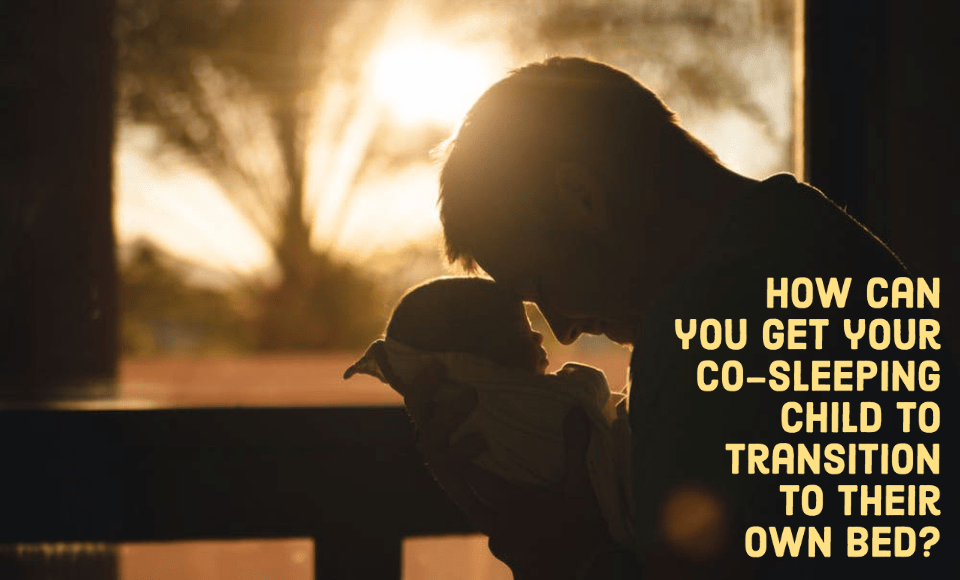Co-sleeping is a controversial practice in the United States, despite the fact that children in most other cultures, as well as children throughout human history, have typically slept with their parents for the first few years of life. Perhaps as a result of this controversy, there’s little information available about what to do when it’s time for a co-sleeping child to move into their own room.
Most co-sleeping literature offers little more than, “when your child is ready, you’ll know.” The truth is that nothing in parenting is quite that simple. Co-sleepers have been lucky enough to have a close bond with their parents in the first years of life, and this bond can make sleeping through the night easier. However, the fact remains that the transition to sleeping alone will come as a shock for any child, even a child who actively wants to sleep alone. Thus transitioning your child into sleeping in their own bed should be a gradual process and not a sudden, traumatic change.
Here’s are some tips for how to get your co-sleeping child to sleep in his own bed.
When Is My Child Ready to Sleep Alone?
There’s no set age at which your child “should” begin sleeping alone, and the truth is that there’s no harm in your child sleeping with you well into her elementary school years if that’s what you, your partner, and your child want. If you or your child are ready for a bit more privacy, though, at minimum your child should no longer be nursing, should be sleeping through the night reliably and without nightmares, and should be occasionally asserting their independence. A child who has no interest in independence is likely not ready to sleep by herself and you may need to wait a few more months.
Create a Cozy Sleep Space
The first thing you should do prior to transitioning your child to his own room is to talk to him about this. Let him know that most kids move into their own beds as they get older and that, now that he’s a big kid, you’d like to see how he feels about moving. Keep talking till you no longer meet with resistance. When planning your child’s sleep space, you should aim for a room that is close to yours and that minimizes scary or jarring noises coming either from outside or from the house itself. Allow your child to pick out linens and decorations for his bed and encourage him to make the space his own. Doing so will help him feel like the bed is something he wants and is choosing as opposed to something he is being pushed into.
Making Sleep Safe
Kids who co-sleep have been lucky enough to spend their early years associating sleep with comfort and closeness. Your child is thus going to need to find a different way to feel this kind of comfort. Some parents worry that sitting with their child till their child falls asleep may set up bad habits, but the reality is that this is a great way to transition into sleeping alone. Your child won’t associate sleeping in her own bed with abandonment or fear. Establish a comforting bedtime ritual like reading a story or singing songs, and sit with your child the first few weeks till she falls asleep. Gradually, if she is ready to move into her own bed, she won’t need you to sit with her.
Be Prepared for Regression
Kids regress during times of stress, and sleep routines are not exempt from this regression. Your child may have nightmares and come running into your room or may have a few days during which he wants to sleep with you again. This is ok. The goal is to make the transition slow and smooth and not traumatic. After a day or two in your bed, begin moving your child back into his own bed again. Preschoolers are especially prone to nightmares, so be prepared to have your child rejoin you in your bed from time to time. If nightmares are becoming a source of fear for your child, you may want to discuss them with your child’s pediatrician.
Help Your Child Adjust
After your child has begun reliably sleeping by herself for three months or more, it’s time to become a little stricter about sleep routines. If your child has a nightmare, allow her to snuggle with you till she falls back asleep, and then take her back to her own room. The same applies to any time she comes running into your room. Though she should never be punished or locked out, giving her a bit of love and then gently walking her back to her room will ensure that she is able to keep sleeping in her own bed on a long term basis.

